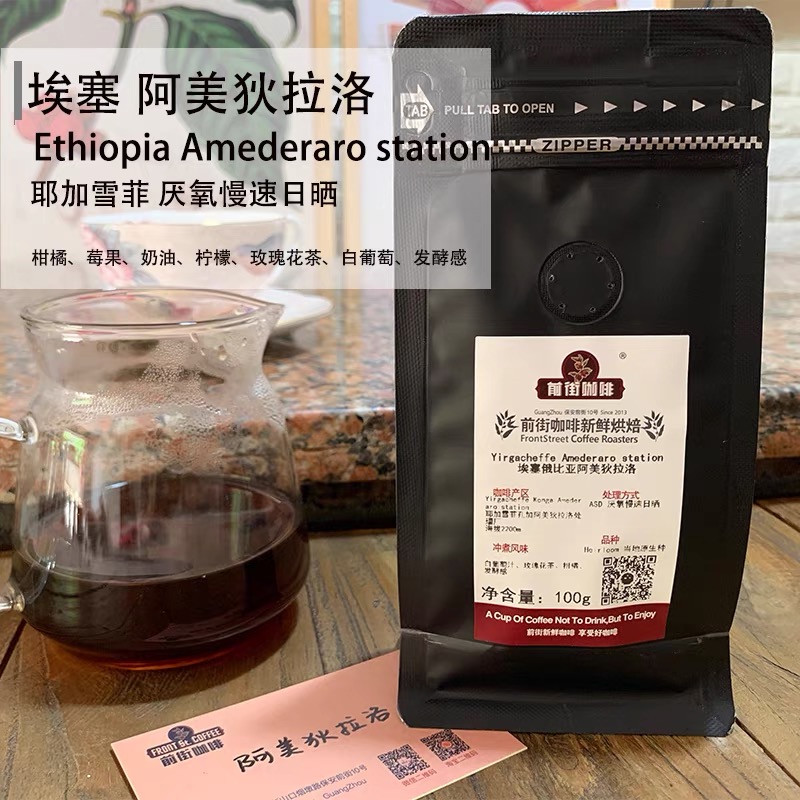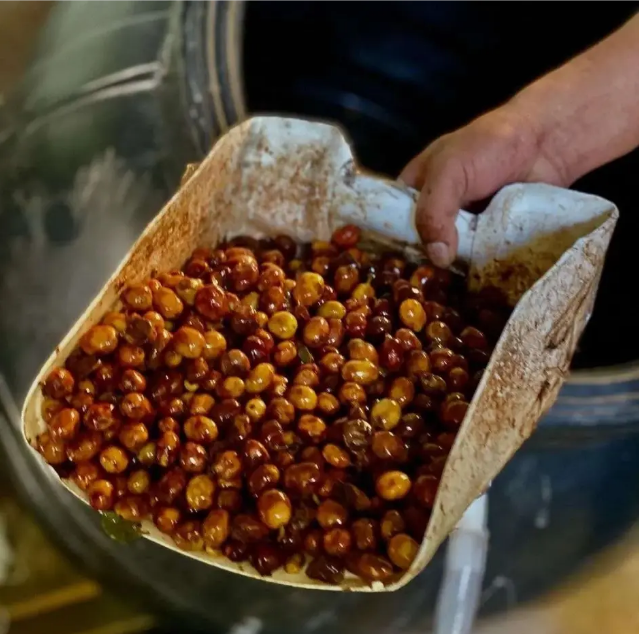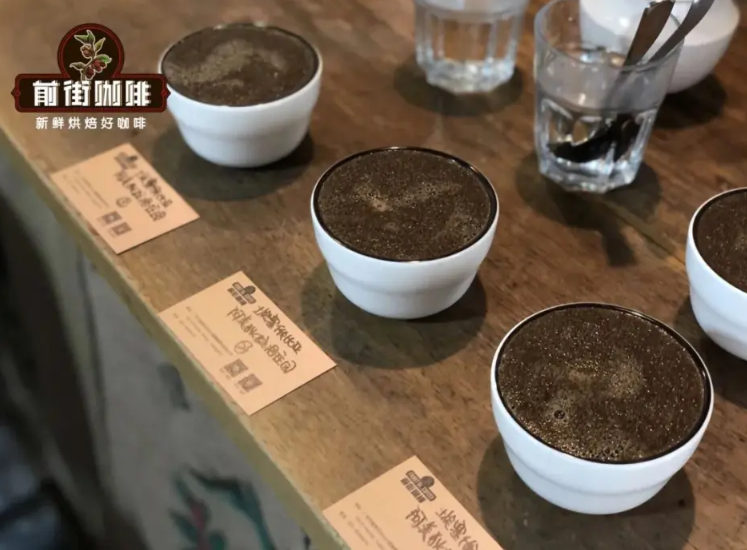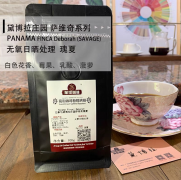What kind of top coffee beans are there? Taste characteristics and flavor evaluation of Ethiopian champion coffee beans.
Amedilaro, Ethiopia
Country of origin: Ethiopia
Producing area: Yega Xuefei
Processing plant: Amedilaro
Altitude: 2200 m
Variety: original species
Treatment method: anaerobic slow sun exposure
Flavor reflected in citrus, berries, cream, lemon, rose tea, white grapes, fermented feeling.
It is recommended that the gram weight of hand-brewed coffee recommended by SCA should be 15g coffee powder 90 degrees to 91 degrees hot water 225ml and the ratio of water to powder at 1:15.

The full name of "TOH" is "East Africa Taste of Harvest Competition" (East African Harvest Flavor), which is founded by the African Fine Coffee Association (AFCA, AFCA) in 2000 to help coffee-producing countries in Africa develop coffee trade and improve coffee quality. ) initiated by 12 coffee makers in Africa
The coffee raw bean cup test competition held by the coffee producing countries is similar to the international COE raw bean competition. TOH is divided into national competition (NATIONAL) and African regional finals (REGIONAL). According to the raw bean cup test standards of CQI and SCA, the winners of national competitions can represent countries to participate in the selection of African regional finals (held by member states in turn).
Amedilaro's double crown refers to the coffee bean processing plant and beans won in the 1920 season and the African region respectively, with a decision score of 90.7 points.
Another special feature of this Amedilaro coffee bean is its treatment-anaerobic slow sun exposure, translated from Anaerobic Slow Dry, abbreviated as ASD. With regard to the anaerobic slow sun treatment ASD, in fact, each letter accurately expresses the characteristics of this treatment, the first is anaerobic, the second is slow, and the third is sun drying. The first time I heard about this treatment was when Erida Manor won the BOP of the Best Panamanian Bean Competition in 1919, when the anaerobically slow sun roses sold for a whopping $1029 a pound. The coffee fruit is put together with the pulp in a sealed barrel for anaerobic fermentation for up to 120 hours. The anaerobic fermented coffee fruit will be placed on a drying bed for at least 5 weeks. This treatment gives this coffee bean a fuller berry aroma.

This Amedilaro comes from Konga in Ethiopia's Yega Sheffield region, and the coffee bean is named after the Amedilaro processing plant (Amederaro station), which produces the coffee beans, and the processing station is owned by Ato. Beyene Eshete . Amedilaro deals with coffee grown in nearby Kongjia, which is planted in iron-rich red soil, and the high altitude and fertile soil provide the strongest support for the coffee's high-quality flavor performance. Mixed planting is one of the characteristics of innumerable coffee varieties grown in Ethiopia; although Ethiopia is a large coffee producer, it is mainly planted by small farmers, and the harvested coffee fruits are sent to nearby processing plants for processing, which forms the second feature-mixed harvest and mixed treatment. This makes it more difficult to trace the varieties, and of course there are other reasons not to repeat here. So unlike other coffee-producing countries, most Ethiopian coffee beans use the name of the original species to fill in the variety information column.

The cup test shows that the medium-high berries connect people to cranberries, strawberries, white grapes, etc., followed by cream, honey, fermentation, etc., and turn to oranges, apples, oranges, etc., with a slight sense of tea at the same time. Rose and so on. Fruit juice-like taste with high complexity.
Important Notice :
前街咖啡 FrontStreet Coffee has moved to new addredd:
FrontStreet Coffee Address: 315,Donghua East Road,GuangZhou
Tel:020 38364473
- Prev

Yunnan fine coffee beans, the origin story of the Chinese own good coffee, Front Street 2013.
Yunnan Qianjie 2013Country of Origin: ChinaProduction area: Lincang, YunnanVariety: Iron PickupAltitude: 1300mTreatment: Sunbaked Degree: ModerateRoasted Flavors are nutty, berry, brown sugar, tea. Lincang City Lincang City is located in the southwest of Yunnan Province. The Tropic of Cancer runs through the south, adjacent to Pu 'er in the east, Dali in the north, Baoshan in the west, and the border with Myanmar in the southwest.
- Next

How do you drink rose summer? Deborah Rosa taste characteristics, special treatment of the legal process.
Panama Deborah Rose Summer country: Ethiopia: Walken Manor: Deborah altitude: 2000-2350 m Variety: Savage Series (Rose Summer Series named after the manor owner) treatment: oxygen-free sun treatment baking degree: moderate baking flavor reflected in white flowers, pineapple, lactic acid sweet and sour taste, full taste, overall sweet and sour balance. The recommendation is based on
Related
- Detailed explanation of Jadeite planting Land in Panamanian Jadeite Manor introduction to the grading system of Jadeite competitive bidding, Red bid, Green bid and Rose Summer
- Story of Coffee planting in Brenka region of Costa Rica Stonehenge Manor anaerobic heavy honey treatment of flavor mouth
- What's on the barrel of Blue Mountain Coffee beans?
- Can American coffee also pull flowers? How to use hot American style to pull out a good-looking pattern?
- Can you make a cold extract with coffee beans? What is the right proportion for cold-extracted coffee formula?
- Indonesian PWN Gold Mandrine Coffee Origin Features Flavor How to Chong? Mandolin coffee is American.
- A brief introduction to the flavor characteristics of Brazilian yellow bourbon coffee beans
- What is the effect of different water quality on the flavor of cold-extracted coffee? What kind of water is best for brewing coffee?
- Why do you think of Rose Summer whenever you mention Panamanian coffee?
- Introduction to the characteristics of authentic blue mountain coffee bean producing areas? What is the CIB Coffee Authority in Jamaica?

